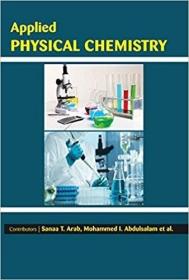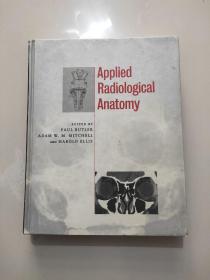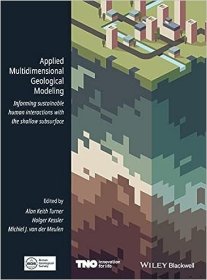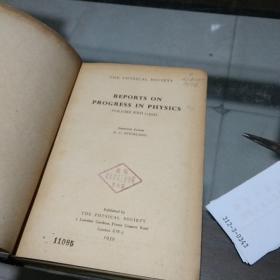
现货Applied Physical Chemistry[9781682511053]
¥ 1434 九五品
仅1件
作者Sanaa T. Arab, Mohammed I. Abdulsalam et al.
出版社Intelliz Press LLC
ISBN9781682511053
出版时间2016-01
装帧精装
纸张其他
正文语种英语
上书时间2023-08-08
- 最新上架
商品详情
- 品相描述:九五品
- 商品描述
-
Physical chemistry is the study of macroscopic, atomic, subatomic, and particulate phenomena in
chemical systems in terms of laws and concepts of physics. The key concepts of physical chemistry are
the ways in which pure physics is applied to chemical problems. The text Applied Physical Chemistry
covers important aspects of applied physical chemistry that is important in chemical process technology
and in the design of chemical products. The aim of rst chapter is to determine the susceptibility
of 316L SS alloy at di erent applied potentials in 3.5% NaCl. The surface chemistry and properties of
aqueous atmospheric aerosols have been explored in second chapter. The goal of third chapter is to
submit a drawing procedure of ions and molecules, by describing how to apply the even-odd and the
isoelectronic rules to single-bonded compounds. A method for calculating the heats of formation of
medium-sized and large-sized molecules has been discussed in fourth chapter. Fifth chapter aims to
replicate hydrotalcites which are clays in a laboratory condition for the degradation of Congo red in
aqueous solution. A graph-theoretical approach to calculate vibrational energies of atomic and
subatomic systems has been introduced in sixth chapter. In seventh chapter, quasicrystals, its types,
physical properties, surface science, and potential applications of them have been discussed. Eighth
chapter focuses on three-center con guration with four, three, and two electrons for carbon, boron,
hydrogen, and halogen exchange. A computational evaluation of bond order and charge distributions
in isomeric aminotroponiminiums and their benzo-fused derivatives has been proposed in ninth
chapter. In tenth chapter, we develop a cyclic voltammetric procedure to obtain -NiOOH or -NiOOH/
-NiOOH mixtures on Ni or Ni-Cr (80:20) alloy electrodes surfaces. We introduce an alternative
approach to achieve close QD-TiO2 contact in eleventh chapter. In twelfth chapter, we report the
synthesis and characterization of such materials incorporating nickel and their test as catalysts for the
hydrogenation of benzaldehyde. The kinetics and products of the reaction of cyclic monoimides with
oxiranes in presence of triethylamine (TEA) as catalyst have been studied in thirteenth chapter in order
to establish the mechanism of the reaction. In fourteenth chapter, the quantum chemical calculations
and the computational docking analysis of the ve Glycans have been focused by an AFM analysis of
various jelly sh tissues. Fifteenth chapter deals with molecular simulation study of the thermodynamics
and the structure of ions at the water/vapor interface. In sixteenth chapter, we focus on aminolysis
of 1-(1-hydroxybenzotriazolyl)-2, 4-dinitrobenzene and 2-(1-hydroxybenzotriazolyl)-5-nitropyridine.
The electronic absorption and uorescence emission characteristics of Anthrylacrylic ester in various
solvents of di erent polarity have been investigated in seventeenth chapter in order to study the role
of polarity in modifying both ground and excited states of the molecule. Eighteenth chapter presents
a theoretical simulation of the infrared spectra of strong hydrogen bond in alpha-phase 2-pyridone
dimers, as well as in their deuterium derivatives at room temperature. The goal of nineteenth chapter
is to establish molecular dynamics (MD) simulations as a viable method for investigating molecular
micelles structures by comparing poly(SULV) and poly(SUVL) MD simulation results to experiment. The
aim of last chapter is to investigate the in uence of combination of two reducing agents on the size,
distribution and morphology of AuNPs during the formation process in colloidal mixture and compares
such results with that of those obtained from the usage of single reducing agent.
相关推荐
-

PHYSIC 蒙古文
八五品石家庄
¥ 80.00
-
![现货Applied Calculus[9780357723487]](https://www0.kfzimg.com/sw/kfz-cos/kfzimg/17733071/2db968261340581b_s.jpg)
现货Applied Calculus[9780357723487]
九五品上海
¥ 2389.00
-
![现货Applied Microeconometrics[9781682513613]](https://www0.kfzimg.com/sw/kfz-cos/kfzimg/17733071/5678e634e658a700_s.jpg)
现货Applied Microeconometrics[9781682513613]
九五品上海
¥ 1223.00
-

原版现货《applied radiological anatomy》
八五品南阳
¥ 200.00
-
![现货Applied Quantum Cryptanalysis[9788770227933]](https://www0.kfzimg.com/sw/kfz-cos/kfzimg/17733071/339bb466264fe499_s.jpg)
现货Applied Quantum Cryptanalysis[9788770227933]
九五品上海
¥ 1215.00
-
![现货Applied Fisheries Science[9781680958416]](https://www0.kfzimg.com/sw/kfz-cos/kfzimg/17733071/00fca002047849b3_s.jpg)
现货Applied Fisheries Science[9781680958416]
九五品上海
¥ 1434.00
-
![现货Applied Nonparametric Econometrics[9781107010253]](https://www0.kfzimg.com/sw/kfz-cos/kfzimg/17733071/aa302d115386200e_s.jpg)
现货Applied Nonparametric Econometrics[9781107010253]
九五品上海
¥ 921.00
-
![现货Applied English Phonology[9781118944523]](https://www0.kfzimg.com/sw/kfz-cos/kfzimg/17733071/f072f4a0e3c97ddc_s.jpg)
现货Applied English Phonology[9781118944523]
九五品上海
¥ 462.00
-

现货 Applied Multidimensional Geological Modeling
九五品上海
¥ 1195.00
-

REPORTS ON PROGRESS IN PHYSIC1959.22
八品南昌
¥ 40.00
— 没有更多了 —
![现货Applied Physical Chemistry[9781682511053]](https://www0.kfzimg.com/sw/kfz-cos/kfzimg/17733071/365edcc0c65ea4dc_b.jpg)

![现货Materials and Technologies of Modern Production[9783036401683]](https://www0.kfzimg.com/sw/kfz-cos/kfzimg/17733071/5fd2824531e165d7_s.jpg)
![现货Introduction to Container Ship Operations and Onboard Safety[9781032155425]](https://www0.kfzimg.com/sw/kfz-cos/kfzimg/17733071/58b7ff43ef7909ee_s.jpg)
![现货Electrophosphorescent Materials and Devices[9789814877343]](https://www0.kfzimg.com/sw/kfz-cos/kfzimg/17733071/18cc1d77bcb7b488_s.jpg)
![现货Organic Semiconductors for Optoelectronics[9781119146100]](https://www0.kfzimg.com/sw/kfz-cos/kfzimg/17733071/24c85a750c708964_s.jpg)
![现货Advances in Food Rheology and Its Applications[9780081004319]](https://www0.kfzimg.com/sw/kfz-cos/kfzimg/17733071/e0c11603c9119d4d_s.jpg)
![现货Advanced Materials and Sustainable Technologies[9783035727562]](https://www0.kfzimg.com/sw/kfz-cos/kfzimg/17733071/dced675333874c48_s.jpg)
![现货Advanced Materials and Manufacturing Engineering II[9783035712681]](https://www0.kfzimg.com/sw/kfz-cos/kfzimg/17733071/660ccfae75fa8d3e_s.jpg)
![现货Materials in Machinery and Construction[9783035718119]](https://www0.kfzimg.com/sw/kfz-cos/kfzimg/17733071/6f402060775e9daa_s.jpg)
![现货Cereal Grain Quality (Softcover Reprint of the Original 1st 1996)[9789401071772]](https://www0.kfzimg.com/sw/kfz-cos/kfzimg/17733071/f93ca1c96a97403a_s.jpg)
![现货Applied Physical Chemistry[9781682511053]](/dist/img/error.jpg)
以下为对购买帮助不大的评价